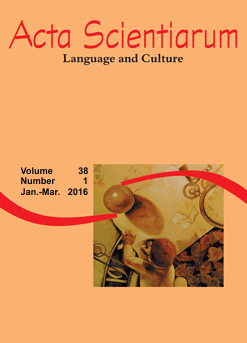<b>O discurso do protagonista em <i>Juliano Pavollini</i>, de Cristovão Tezza: uma estrutura em paralaxe?
Resumo
O narrador de Juliano Pavollini é autodiegético, isto é, sua voz assume a representação de todos os aspectos do texto; no entanto, trata-se de um narrador não onisciente, pois tem visão limitada dos fatos ocorridos e que, além disso, faz uma reencenação dos momentos de surpresa. Este Juliano-narrador apresenta uma linguagem altamente elaborada, com domínio total da norma culta. Há também momentos nos quais a voz representada é a do Juliano-personagem, cujas intervenções podem ser percebidas nos diálogos em discurso direto. Existe um hiato entre esses dois discursos: o primeiro é sofisticado e manipulador, enquanto o segundo deveria exprimir um Juliano ingênuo e às voltas com uma realidade ‘maior do que ele’, por assim dizer. Partimos do pressuposto de que se trata de um hiato de efeito calculado sobre o leitor e sobre a estrutura narrativa; buscamos, também, investigar quais os efeitos que isso provoca no texto, utilizando o conceito de ‘visão em paralaxe’, proposto por Žižek.
Downloads
DECLARAÇÃO DE ORIGINALIDADE E DIREITOS AUTORAIS
Declaro que o presente artigo é original, não tendo sido submetido à publicação em qualquer outro periódico nacional ou internacional, quer seja em parte ou em sua totalidade.
Os direitos autorais pertencem exclusivamente aos autores. Os direitos de licenciamento utilizados pelo periódico é a licença Creative Commons Attribution 4.0 (CC BY 4.0): são permitidos o acompartilhamento (cópia e distribuição do material em qualqer meio ou formato) e adaptação (remix, transformação e criação de material a partir do conteúdo assim licenciado para quaisquer fins, inclusive comerciais.
Recomenda-se a leitura desse link para maiores informações sobre o tema: fornecimento de créditos e referências de forma correta, entre outros detalhes cruciais para uso adequado do material licenciado.




















6.png)









